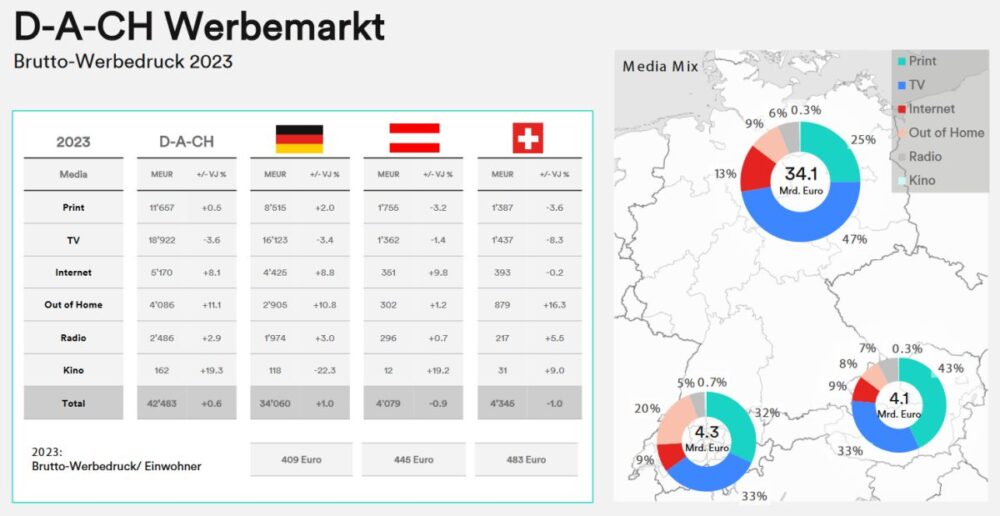Hotel industry and gastronomy lead the digital transformation in the luxury segment
Luxury advertising is going digital. According to the Luxury Advertising Expenditure Forecast published by Zenith, 50 percent of advertising for luxury hotels will be digital this year. Last year, the figure was 47 percent. Across all luxury brands, 33 percent of advertising will be digital this year, compared to 30 percent last year.

This is the fourth annual edition of the Luxury Advertising Expenditure Forecast, which examines luxury advertising spend in 23 key luxury markets. This report focuses specifically on luxury advertising, along with the sub-categories of luxury cars, fragrances & beauty, fashion & accessories, watches & jewelry and - new for this edition - luxury hospitality (high-end hotels, restaurants, bars and clubs).
This new category is well ahead of the other luxury sub-categories in terms of its advertising engagement in digital media. Overnight guests in the luxury hotel industry now predominantly research and purchase online, so brands have shifted their budgets to digital channels accordingly. For other luxury goods, however, customers are much more likely to make their final purchase after trying the item in person. Zenith predicts that luxury automotive brands will spend 39% of their advertising budgets on digital advertising this year, followed by watches & jewelry brands (28%), fragrances & beauty (27%) and fashion & accessories (13%).
Advertising is digitizing more slowly in the luxury segment
Luxury brands have been slower to adopt digital advertising than most other brands. In the 23 markets included in the report, advertisers across all categories spent 39 percent of their budgets on digital advertising in 2017, compared to 30 percent for luxury. Zenith expects the global share of digital advertising to be 42 percent this year, compared to 33 percent for luxury.
Luxury brands have always been skeptical of the value of the digital environment for communicating their brand values, with its limited ad formats, cluttered pages and often limited quality content. However, the environment has been improved with better ad formats and high-quality content such as premium video, while programmatic private marketplaces, preferred and programmatic guaranteed offers help brands choose the right placements for their messages.
Digital advertising as a growth driver
Digital advertising is now responsible for almost all of the growth in luxury advertising. Zenith forecasts that luxury advertising in digital media will grow by 886 million US dollars between 2017 and 2019, with television advertising growing by 27 million US dollars, cinema advertising by 21 million US dollars and radio advertising by 2 million US dollars. Luxury advertising in newspapers, magazines and outdoor advertising will shrink by a total of USD 305 million, resulting in a net increase of USD 631 million in luxury advertising between 2017 and 2019. By 2019, Zentih predicts that digital advertising will account for 35 percent of all luxury advertising.
Luxury brands struggle with younger consumers
The "Luxury Advertising Expenditure Forecast" assumes that the volume of luxury advertising will be 2.4% below the growth rate of advertising in general in 2018 and 2.8% in 2019. In the 23 markets included in this report, Zenith expects growth of 4.2 percent across all categories in 2018 and 3.6 percent in 2019. Some luxury brands are struggling to adapt to the preferences of younger consumers, who often value experiences over material luxury. The continued decline in the use of print media poses a particular challenge for high-end luxury brands, which continue to rely heavily on magazines to communicate their brand values.
A lot of luxury advertising budget still flows into magazines
Zenith divides luxury goods into two types: High Luxury (Watches & Jewelry and Fashion & Accessories) and Broad Luxury (Luxury Cars, Perfumes & Beauty and Luxury Gastronomy). High Luxury brands are more exclusive and iconic and advertise in prestigious media with limited reach. Last year, they spent 57 percent of their budget on magazine advertising. This proportion is falling, but slowly: Zenith expects that 55 percent of high-luxury advertising budgets will still flow into magazines in 2019. Broad luxury brands, on the other hand, target a broader audience and invested the largest share of their budget (41%) in television last year.
The largest market for luxury advertising is by far the USA, followed by China. Luxury brands spent 5.2 billion US dollars on advertising in the USA and 2.1 billion US dollars in China in 2017. These two markets accounted for 61% of luxury advertising in the 23 markets included in this year's report.
China is the fastest to switch to digital in the luxury sector
China is the most advanced digital market for luxury advertisers, and the lead is increasing. 53% of luxury advertising in China was digital in 2017, and Zenith expects this share to rise to 68% by 2019. This rapid shift to digital advertising is fueled by the adoption of e-commerce by luxury brands. They are selling their products directly on platforms such as Alibaba's Tmall, participating in Singles' Day shopping events and partnering with popular Chinese influencers.
"After a relatively slow start, luxury advertisers are now embracing the digital future, led by luxury hotel and hospitality brands," says Jonathan Barnard, Head of Forecasting at Zenith. "Luxury brands face unique challenges online, such as the need to maintain exclusive brand values while communicating with potential customers. By using personalized digital communication and high-quality e-commerce experiences, luxury brands can generate new sales while maintaining their exclusive appeal." (pd/hae)
* The markets included in the report are Australia, Brazil, China, Colombia, France, Germany, Hong Kong, Italy, Japan, Malaysia, MENA, Mexico, the Netherlands, Peru, Russia, Singapore, South Africa, South Korea, Spain, Switzerland, Taiwan, the UK and the USA.








